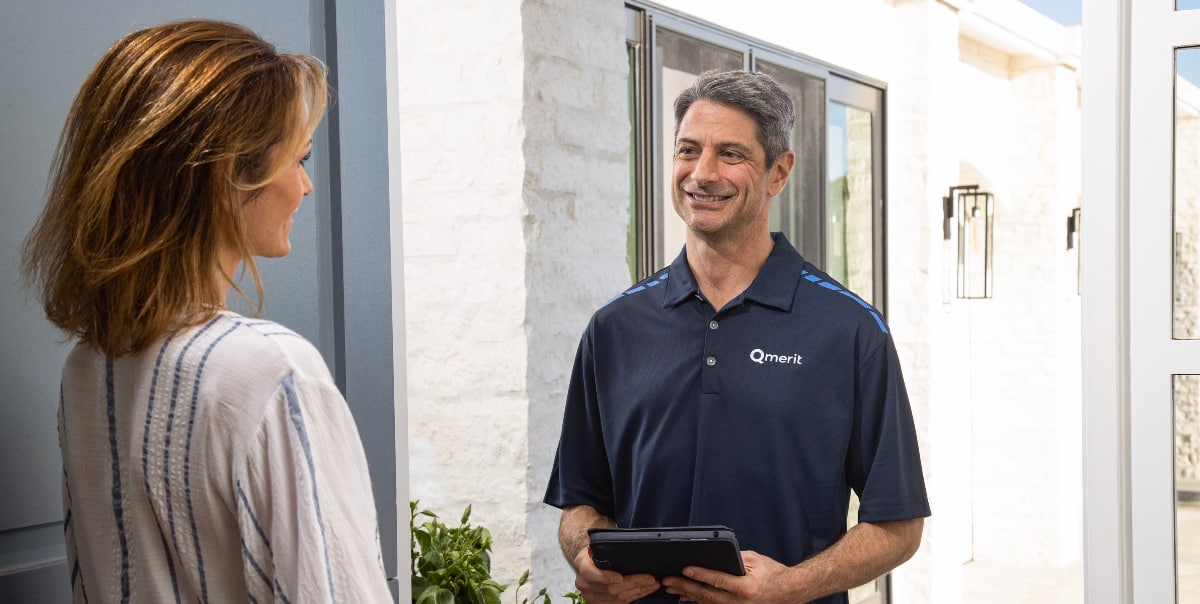Offering a Maintenance/Safety Agreement for Electrification Customers Makes Sense and Dollars

5 Min. Read
Electrification and the vast, growing need for electric vehicle (EV) charging stations are changing the electric service industry and creating a great opportunity for you and your business. Offering quality installation services will help you stand out as an expert contractor for their electricity project. However, you can grow a steady stream of recurring business and income by offering maintenance and safety agreements to your clients.
The electrification market is growing swiftly. The infrastructure is rapidly expanding to meet the demand for a reliable charging station network from sea to shining sea. As a result, businesses and property owners are eager to find trustworthy, reputable experts for installing charging stations, backup battery storage, upgraded panels, and other tools to power their EVs, curb electricity costs, and protect their assets.
Justifying costs and offering peace of mind
However, electrification projects, even EV home charger installations, often come with a significant upfront cost. Homeowners, property owners, and businesses need to protect that investment. Establishing an ongoing maintenance agreement with them can add value to your offering and help justify the cost.
A maintenance/safety agreement offers peace of mind. Many companies are installing EV charging stations in commercial parking lots, and fleet managers are looking into at-home charger installation for their EV drivers. However, odds are that your customers are not familiar with the charger technology, so they need qualified help to install and maintain it.
Offering a maintenance service agreement after installing a charging station is key to showing customers that you stand behind your work. The offer inspires faith and assures customers that they chose the right contractor. Besides instilling confidence, however, offering regular maintenance will extend the lifespan of the equipment and the customer’s investment. Your continued interaction will also help ensure the safety of the electrical system. You can keep educating customers about electrification solutions and possibly identify upgrades for them to consider as their needs change.
Ultimately, an ongoing relationship with the customer will likely result in higher satisfaction rates. Satisfied customers are good for word-of-mouth and enhancing your business reputation.
Service contracts
Simply put, a service-maintenance or safety-related contract is a legal agreement between your customer (whether a homeowner or business owner) and you, the maintenance service provider, or, in this case, the certified installer.
Maintenance contracts can be drafted for various services at a home or business, from general upkeep to more involved repairs. The agreement clearly outlines what type of maintenance services you’re responsible for providing, which protects you from potential disputes. It also protects the customer, who knows their equipment will be adequately maintained and what to expect if repairs are needed.
It is estimated that a residential electrical contractor sees an existing customer once every seven years. By offering a maintenance/safety agreement your electricians will be visiting you customers at least once every year. During these maintenance visits you will have the opportunity to explore additional services your company can provide.
Independent service contractors use two main types of long-term service agreements: those used by independent service contractors for maintenance work, whether for technology, landscaping, or equipment maintenance. Both types cover regular ongoing service to repair and replace parts. But the cost structure differs greatly:
- Annual maintenance contract (AMC) – An AMC covers basic maintenance needs and checks that everything is in good working order. An AMC has a lower routine cost but does not cover additional expenses that could arise if repairs are needed.
- Comprehensive maintenance contract (CMC) – A CMC, as the name implies, is far more thorough. It covers itemized replacement parts, labor, or other costs that could come up while undergoing routine maintenance. Blanket agreements like these re more costly but ensure that there are no additional costs to bear.
Things to include in your contracts
A well-crafted service contract defines any vague terms used in the contract, such as “the work,” “contract year,” and “the equipment.” It also will feature this information:
The parties involved: Any contract needs to spell out who the interested parties are. Include the names of both sides, their addresses, and where the equipment is located.
Equipment covered: The equipment information, such as model, location, operating conditions, and other information regarding equipment being serviced.
Responsibilities: This outlines whether the contract is an AMC or CMC. This section specifies what the service provider is supposed to do, how often, and other details to avoid disputes in the future. It should lay out the work to be performed with an agreed-upon list of duties or services.
Client expectations: The contract should include details about the company’s responsibilities in terms of maintenance, access, cooperation, and more.
Response time frames: The agreement should outline expected routine or emergency support response times. It should also have time limits within which the required service must be done so the equipment can be deployed again.
Warranty information: This may include compensation for damage caused by the service provider, delays in service, or other conditions.
Time and money: Any contract should clearly state the price involved, duration, and payment terms. If the contract is comprehensive, it should state what is included. Likewise, if it is only for servicing and does not include parts or repair labor time, that should be included. If being paid hourly, specify the rate and terms for any extra pay on holidays or under other circumstances. If pay is based on the number of devices (which is common when multiple chargers are involved), indicate the fixed price per device. Also, be sure to spell out payment methods you accept (e.g., charge card, Zelle), credit terms, discounts for early payment, and penalties for late payment.
Force majeure: This is a standard part of all legal contracts. It removes the responsibility for fulfilling the terms under extraordinary circumstances, such as a natural disaster.
End terms: Don’t forget to include details on how either party can terminate the contract. You may stipulate 30 days’ notice or reasons for which the contract would be nullified, such as criminal acts by one party.
Also, add anything else to the service contract negotiated by you and the company, so you both have all the terms for the EV home charger installation.
Gearing up for this market
The need is growing for talented electrical contractors as the number of EVs on the roads is rapidly increasing. If you want to train for EV home charger installation and help build a net-zero future, join the Qmerit team of electrical contractors.
At Qmerit, we are here to help homeowners, building owners, and property managers make the transition – implementing green electric solutions by leveraging our network of local contractors. Qmerit offers a Certified Solutions Partner (CSP) program. The program allows electrical contractors to learn the latest techniques through in-depth training and continuing education programs. We also provide business coaching workforce development for electrical contractors.
You can reach a new customer base for your electrical contracting business, provide training and resources, and become a leader in your local market. Contact Qmerit today.
